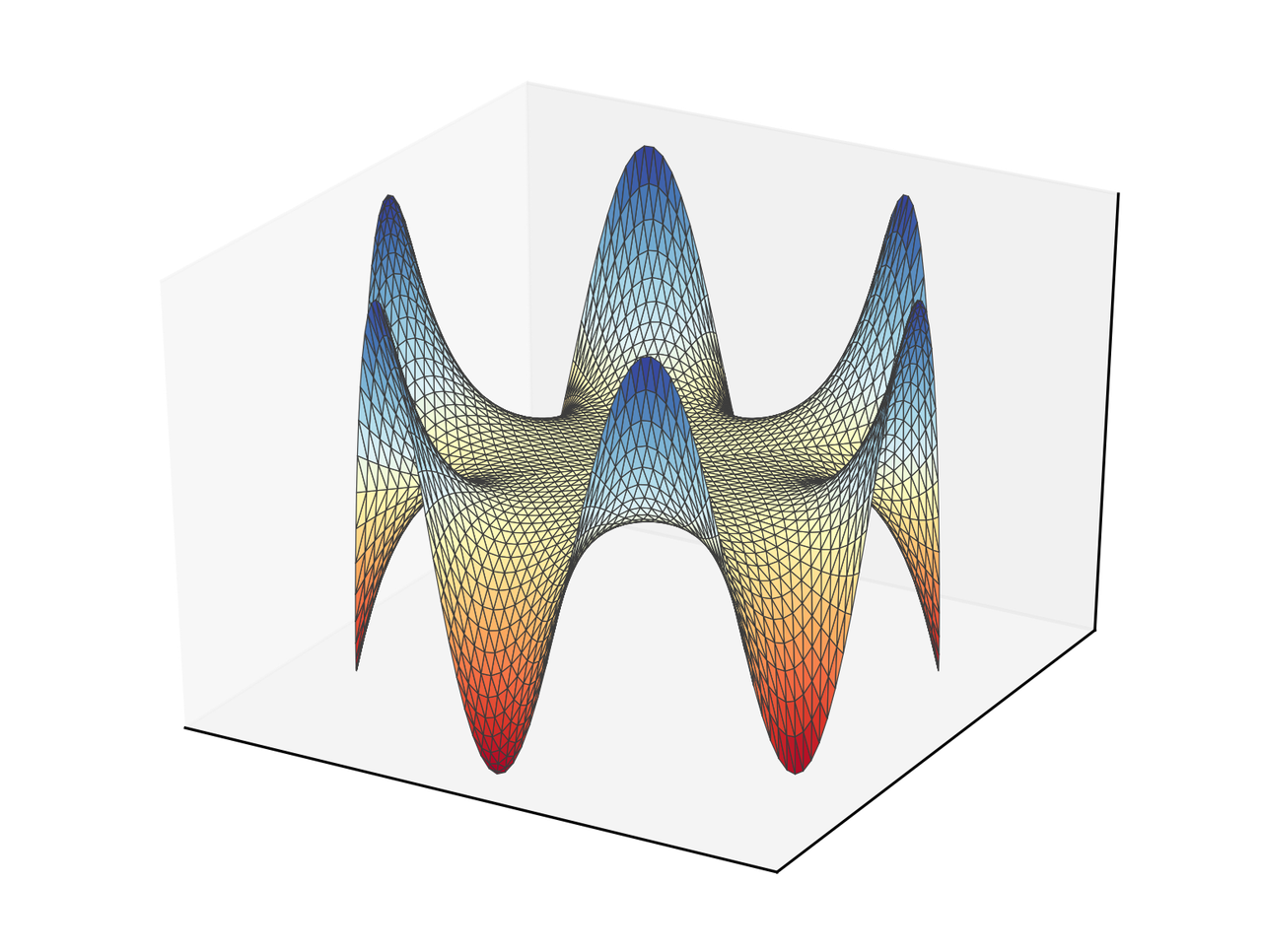Regresando al Método de elementos de frontera
Durante octubre (2017) estuve escribiendo un programa por día para algunos métodos numéricos famosos en Python y Julia. Esto estaba pensado como un ejercicio para aprender Julia. Puedne ver un resumen aquí. Tuve éxito en 30 de los retos, exceptuando por el BEM (Método de elementos de frontera, en inglés), donde no pude encontrar que hice mal ese día. La publicación original está aquí.
Thomas Klimpel encontró el error y me escribió un email describiendo lo que estaba mal. Entonces, estoy creando esta publicación con la implementación correcta del BEM.
El Método de Elementos de Frontera
Queremos rsolver la ecuación
con
Para este método, necesitamos usar la representación integral de la ecuación, que, en este caso, es
con
y
Entonces, podemos formar un sistema de ecuaciones
que obtenemos discretizando la frontera. Si tomamos variables constantes en la discretización, las integrales se pueden calcular analíticamente
y
para puntos \(n\) y \(m\) en diferentos elementos, y los subíndices \(A, B\) se refieren a los puntos finales del elemento de evaluación. Debemos tener cuidado al evaluar esta expresión ya que \(r_A\) y \(r_B\) pueden ser (casi) cero y hacer que explote. Además, aquí es donde estaba el problema principal ya que olvidé calcular los ángulos para elements que están, en general, no alineados con los ejes vertical u horizontal.
Para los términos en la diagonal las integrales se evalúan como
y
con \(L\) el tamaño del elemento.
A continuación está el código. Tengan en cuenta que este código funciona para problemas puramente de Dirichlet. Para problemas mixtos Dirichlet-Neumann, las matrices de influencia deben reordenarse para separar las incógnitas de las variables conocidas en lados opuestos de la ecuación.
Pueden descargar los archivos para este proyecto aquí. Se incluye un archivo YML para crear un ambiente de conda con la lista de dependencias. Por ejemplo, se usa la versión 3.0 de Meshio.
import numpy as np from numpy import log, arctan2, pi, mean, arctan from numpy.linalg import norm, solve import matplotlib.pyplot as plt from mpl_toolkits.mplot3d import Axes3D import meshio def assem(coords, elems): """Assembly matrices for the BEM problem Parameters ---------- coords : ndarray, float Coordinates for the nodes. elems : ndarray, int Connectivity for the elements. Returns ------- Gmat : ndarray, float Influence matrix for the flow. Fmat : ndarray, float Influence matrix for primary variable. """ nelems = elems.shape[0] Gmat = np.zeros((nelems, nelems)) Fmat = np.zeros((nelems, nelems)) for ev_cont, elem1 in enumerate(elems): for col_cont, elem2 in enumerate(elems): pt_col = mean(coords[elem2], axis=0) if ev_cont == col_cont: L = norm(coords[elem1[1]] - coords[elem1[0]]) Gmat[ev_cont, ev_cont] = - L/(2*pi)*(log(L/2) - 1) Fmat[ev_cont, ev_cont] = - 0.5 else: Gij, Fij = influence_coeff(elem1, coords, pt_col) Gmat[ev_cont, col_cont] = Gij Fmat[ev_cont, col_cont] = Fij return Gmat, Fmat def influence_coeff(elem, coords, pt_col): """Compute influence coefficients Parameters ---------- elems : ndarray, int Connectivity for the elements. coords : ndarray, float Coordinates for the nodes. pt_col : ndarray Coordinates of the colocation point. Returns ------- G_coeff : float Influence coefficient for flows. F_coeff : float Influence coefficient for primary variable. """ dcos = coords[elem[1]] - coords[elem[0]] dcos = dcos / norm(dcos) rotmat = np.array([[dcos[1], -dcos[0]], [dcos[0], dcos[1]]]) r_A = rotmat.dot(coords[elem[0]] - pt_col) r_B = rotmat.dot(coords[elem[1]] - pt_col) theta_A = arctan2(r_A[1], r_A[0]) theta_B = arctan2(r_B[1], r_B[0]) if norm(r_A) <= 1e-6: G_coeff = r_B[1]*(log(norm(r_B)) - 1) + theta_B*r_B[0] elif norm(r_B) <= 1e-6: G_coeff = -(r_A[1]*(log(norm(r_A)) - 1) + theta_A*r_A[0]) else: G_coeff = r_B[1]*(log(norm(r_B)) - 1) + theta_B*r_B[0] -\ (r_A[1]*(log(norm(r_A)) - 1) + theta_A*r_A[0]) F_coeff = theta_B - theta_A return -G_coeff/(2*pi), F_coeff/(2*pi) def eval_sol(ev_coords, coords, elems, u_boundary, q_boundary): """Evaluate the solution in a set of points Parameters ---------- ev_coords : ndarray, float Coordinates of the evaluation points. coords : ndarray, float Coordinates for the nodes. elems : ndarray, int Connectivity for the elements. u_boundary : ndarray, float Primary variable in the nodes. q_boundary : [type] Flows in the nodes. Returns ------- solution : ndarray, float Solution evaluated in the given points. """ npts = ev_coords.shape[0] solution = np.zeros(npts) for k in range(npts): for ev_cont, elem in enumerate(elems): pt_col = ev_coords[k] G, F = influence_coeff(elem, coords, pt_col) solution[k] += u_boundary[ev_cont]*F - q_boundary[ev_cont]*G return solution #%% Simulation mesh = meshio.read("disk.msh") elems = mesh.cells["line"] bound_nodes = list(set(elems.flatten())) coords = mesh.points[bound_nodes, :2] x, y = coords.T x_m, y_m = 0.5*(coords[elems[:, 0]] + coords[elems[:, 1]]).T theta = np.arctan2(y_m, x_m) u_boundary = 3*np.cos(6*theta) #%% Assembly Gmat, Fmat = assem(coords, elems) #%% Solution q_boundary = solve(Gmat, Fmat.dot(u_boundary)) #%% Evaluation ev_coords = mesh.points[:, :2] ev_x, ev_y = ev_coords.T solution = eval_sol(ev_coords, coords, elems, u_boundary, q_boundary) #%% Visualization tris = mesh.cells["triangle"] fig = plt.figure() ax = fig.add_subplot(111, projection='3d') ax.plot_trisurf(ev_x, ev_y, solution, cmap="RdYlBu", lw=0.3, edgecolor="#3c3c3c") plt.xticks([]) plt.yticks([]) ax.set_zticks([]) plt.savefig("bem_solution.png", bbox_inches="tight", transparent=True, dpi=300)
En este caso obtenemos el siguiente resultado.

Comentarios
Comments powered by Disqus